A team of MIT engineers has devised a way to deliver the necessary drugs by smuggling them within nanoparticles that are attached to the cells sent in to fight the tumor. As a result, the immune cell stimulating drug reaches only its intended targets, greatly reducing the risk to the patient.
Sep 16th, 2010
Read more
Researchers have developed a chemical methodology that can be used to attach virtually any antibody to a nanoparticle without the need to optimize the reaction conditions.
Sep 16th, 2010
Read more
The ability of phase-change materials to readily and swiftly transition between different phases has made them valuable as a low-power source of non-volatile or flash memory and data storage. Now an entire new class of phase-change materials has been discovered by researchers with the Lawrence Berkeley National Laboratory and the University of California Berkeley that could be applied to phase change random access memory technologies and possibly optical data storage as well.
Sep 16th, 2010
Read more
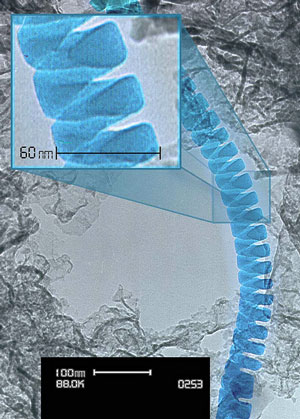 Researchers at Oregon State University have reported the successful loading of biological molecules onto 'nanosprings' - a type of nanostructure that has gained significant interest in recent years for its ability to maximize surface area in microreactors.
Researchers at Oregon State University have reported the successful loading of biological molecules onto 'nanosprings' - a type of nanostructure that has gained significant interest in recent years for its ability to maximize surface area in microreactors.
Sep 16th, 2010
Read more
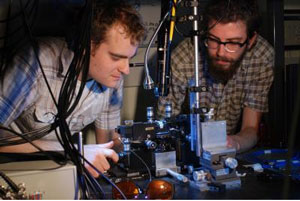 Scientists from Bristol's Centre for Quantum Photonics have developed a silicon chip that could be used to perform complex calculations and simulations using quantum particles in the near future.
Scientists from Bristol's Centre for Quantum Photonics have developed a silicon chip that could be used to perform complex calculations and simulations using quantum particles in the near future.
Sep 16th, 2010
Read more
Two new Arkansas start up companies have announced exclusive license agreements with UALR - the University of Arkansas at Little Rock - to bring to market a patent-pending technology developed by the university's Nanotechnology Center to provide anti-counterfeiting solutions for manufacturers.
Sep 16th, 2010
Read more
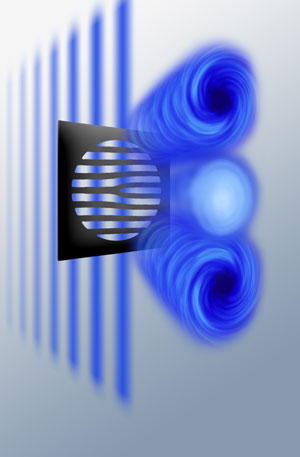 Prof. Schattschneider from Vienna University of Technology, together with colleagues from Belgium, is developing a method of producing rotating electron beams.
Prof. Schattschneider from Vienna University of Technology, together with colleagues from Belgium, is developing a method of producing rotating electron beams.
Sep 16th, 2010
Read more
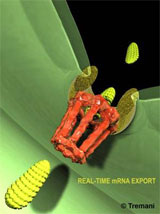 Albert Einstein College of Medicine findings mark key advance in using microscopy to reveal secrets of living cells.
Albert Einstein College of Medicine findings mark key advance in using microscopy to reveal secrets of living cells.
Sep 16th, 2010
Read more
Nano Today is requesting written nominations from our reader community for the 2011 Nano Today Award.
Sep 16th, 2010
Read more
A research group in the International Center for Materials Nanoarchitectonics (MANA) at the National Institute for Materials Science (NIMS) succeeded for the first time in the world in nano-tensile strength measurements of boron nitride nanotubes using a high performance transmission electron microscope.
Sep 16th, 2010
Read more
Within the framework of the Belgian Presidency of the EU, a conference was held on Tuesday on the development of nanomaterials management and information tools.
Sep 16th, 2010
Read more
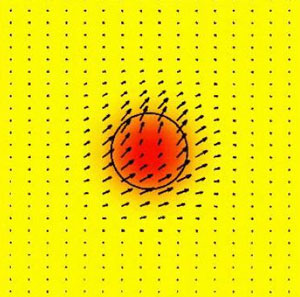 Researchers at the National Institute of Standards and Technology (NIST) have found theoretical evidence of a new way to generate the high-frequency waves used in modern communication devices such as cell phones.
Researchers at the National Institute of Standards and Technology (NIST) have found theoretical evidence of a new way to generate the high-frequency waves used in modern communication devices such as cell phones.
Sep 15th, 2010
Read more
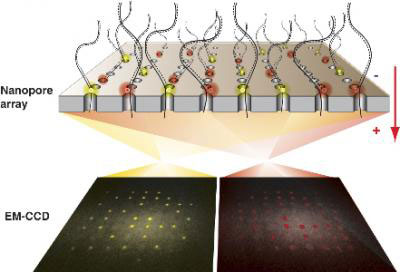 A team led by Boston University biomedical engineering researchers has won a $4.1 million, four-year grant from the National Institutes of Health to refine its nanoscale, low-cost, ultra-fast DNA sequencing method that could lead to individual genome sequencing for less than $1,000.
A team led by Boston University biomedical engineering researchers has won a $4.1 million, four-year grant from the National Institutes of Health to refine its nanoscale, low-cost, ultra-fast DNA sequencing method that could lead to individual genome sequencing for less than $1,000.
Sep 15th, 2010
Read more
The UAlbany NanoCollege is being recognized for its commitment to advancing healthcare through pioneering education and leading-edge research and development in nanobioscience, as well as its contributions to the economic and educational growth of the Capital Region and New York State.
Sep 15th, 2010
Read more
Late-breaking abstracts for posters and presentations will be accepted for Nanoinformatics 2010 until October 15.
Sep 15th, 2010
Read more
The 22nd edition of the European Union Contest for Young Scientists (EUCYS) will take place in Lisbon at the Museum of Electricity. For more than 20 years the Contest has been bringing together the brightest young minds in European science highlighting the importance of innovation and research for future generation.
Sep 15th, 2010
Read more







 Subscribe to our Nanotechnology News feed
Subscribe to our Nanotechnology News feed